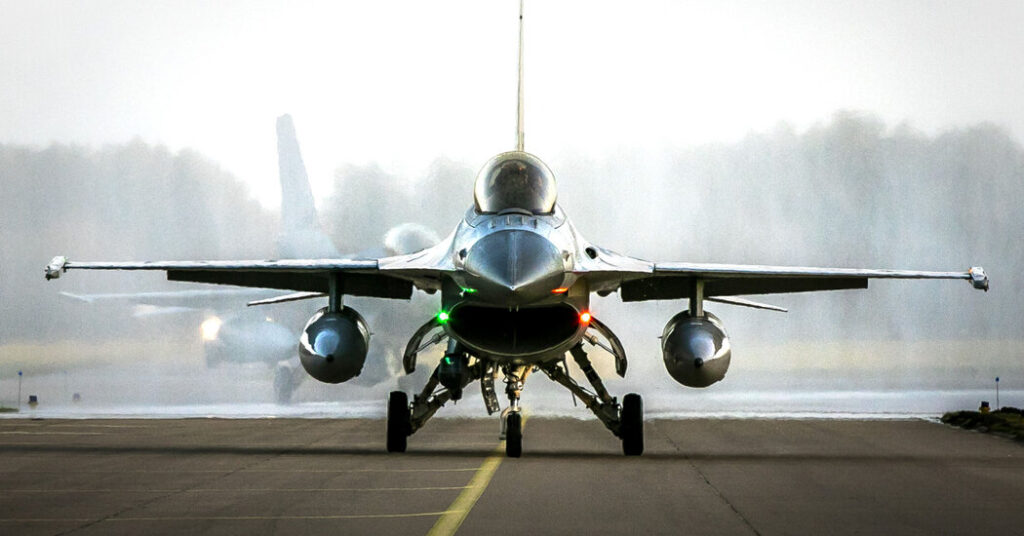British and Dutch plans to help Ukraine obtain F-16 fighter jets have put the United States and some of its closest European allies at odds — yet again — over what weapons the West should send Kyiv to defend against Russia’s invasion.
Even if the Biden administration overcomes its long-held reluctance to give Ukraine the American-made planes, the F-16 would not be used in combat for months at the earliest, officials and military analysts say. But with no end to the war in sight, the F-16 has become the latest advanced weapon that Ukraine and some of its backers say it needs to stave off Russia — both in the current conflict and for years to come.
Here is a look at the F-16, why Ukraine wants it and why the Biden administration is hesitant to supply it.
What is the F-16?
First flown in 1976, the F-16 “Fighting Falcon” is a supersonic fighter jet used by militaries in 25 countries for air-to-air combat and air-to-ground strikes. It has flown in American conflicts in Afghanistan, Iraq, Kosovo, the Persian Gulf and on homeland defense missions in U.S. airspace.
The F-16 is built by the American defense contractor Lockheed Martin and manufacturers in Belgium, Denmark, the Netherlands and Norway — four countries that a senior Ukrainian official says have quietly signaled they are willing to transfer some of their F-16s to Kyiv.
It is widely considered versatile, lightweight and cost-effective — with a price tag of up to $63 million, depending on the model, according to some estimates. There are approximately 3,000 currently in active military service worldwide, including hundreds in the U.S. Air Force and Navy.
Why does Ukraine want them so much?
The F-16 has both offensive and defensive capabilities. In the short term, Ukrainian officials say, F-16s and other advanced Western fighter jets are needed to enhance air defenses, with Kyiv’s existing ground-launched systems being exhausted by frequent barrages of Russian missiles. The jets can be launched within minutes and equipped to shoot down incoming missiles and enemy aircraft.
Without modern fighter jets, “no air defense system will be perfect,” President Volodymyr Zelensky told European leaders gathered at a summit in Reykjavik, Iceland, this week.
Beyond the current conflict, many officials across Europe and in the United States believe the F-16 could be a key deterrent to future aggression against Ukraine by Russia’s vastly superior air force.
Why is the U.S. so reluctant to send them?
Training Ukraine’s pilots to fly Western jets will take months, and the Biden administration says it is better to send weapons that will help Ukraine in its coming counteroffensive against Russia — a battle that many in the West hope will be a turning point in the war. A senior American official said this week that the cost of sending F-16s would absorb much of an already dwindling pot of U.S. war funding.
At a House hearing last month, Celeste A. Wallander, an assistant secretary of defense, said that the administration was focused on Ukraine’s military needs but also on what was practical. “What do they require right now, which is what we’ve been focused on for the battles they are facing,” she said. “What can we deliver that will be timely and effective?”
She said that modern Western jet fighters, like F-16s, were “about eighth on the list” of priorities.
What are the chances that Ukraine will ultimately get F-16s?
Probably fair to high, according to officials and military analysts. The Biden administration has previously said no to several types of advanced weapons for Ukraine — including HIMARS missile launchers, Abrams tanks and Patriot missiles — only to reverse itself under pressure from European allies and Congress.
Under what analysts describe as the mostly likely scenario, the United States would issue re-export licenses to other countries that have F-16s, allowing them to transfer their jets to Ukraine. Given the costs of each jet, it is less likely that the United States would send its own F-16s to Ukraine, though it is not impossible.
If Western allies intend to upgrade Ukraine’s aged Soviet-era air fleet with more modern jets, giving the country F-16s is “the most likely outcome,” said Douglas Barrie, a military aerospace expert at the International Institute for Strategic Studies in London.
He also said it would be unlikely for Britain, with its “special relationship” with America, to push ahead with trying to provide F-16s if the Biden administration was not at least somewhat on board. “It would be surprising, to put it mildly,” he said.

